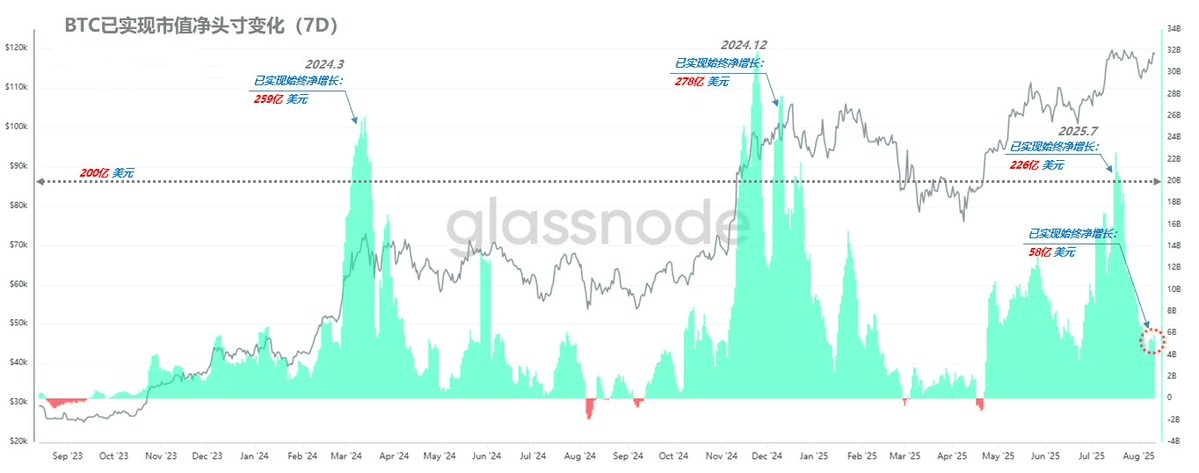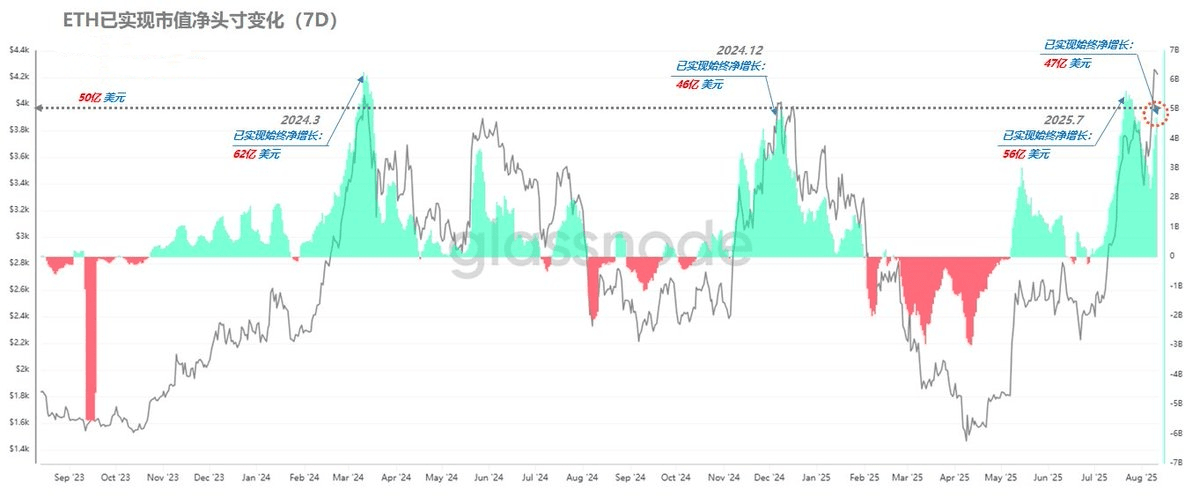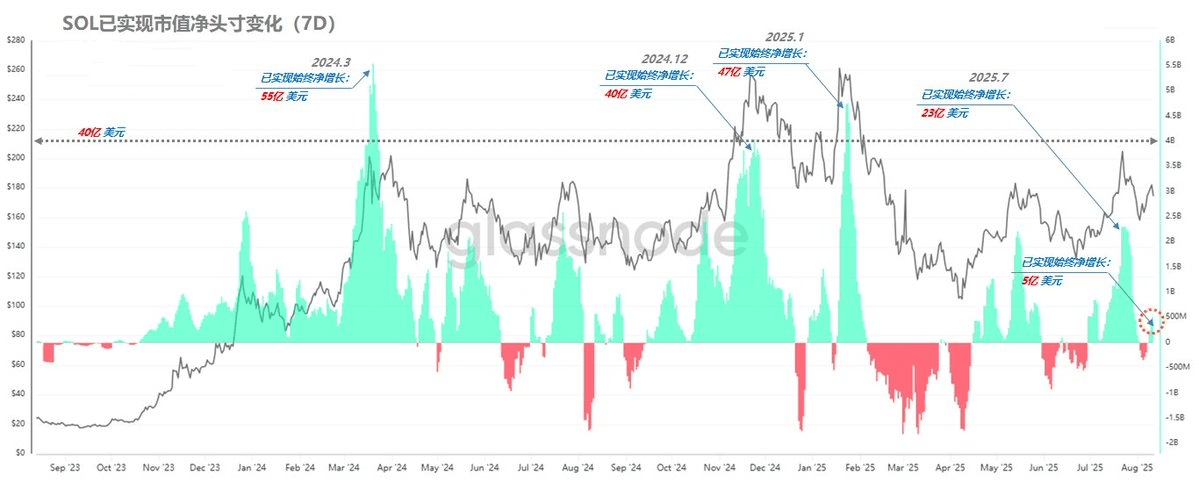One of the core indicators measuring the real capital inflow of crypto assets is the 'Realized Cap' (RC). Unlike simple price fluctuations, RC excludes the internal transfer of chips within exchanges, providing a more accurate reflection of on-chain and institutional capital entering the market, including ETF purchases and large company holdings.
BTC was once the undisputed leader
Historically, in every round of key market conditions, Bitcoin's 7-day net growth of RC has led by multiples. Especially during the three attempts to reach historical highs in March 2024, December 2024, and July 2025, BTC achieved net growths of $25.9 billion, $27.8 billion, and $22.6 billion respectively, firmly sitting at the core of industry capital flow.

(Figure 1)
Long-term ranking of ETH and SOL
At the same time, Ethereum's performance has also been quite stable, with 7-day net growths of $6.2 billion, $4.8 billion, and $5.6 billion, firmly holding the second position. Although Solana occasionally shows bright performance, its data has always been slightly inferior, with three respective figures of $5.5 billion, $4 billion, and $4.7 billion.

(Figure 2)
Latest changes: The second brother makes a comeback, the big brother cools down.
As of the latest statistics, the 7-day net growth of BTC's RC has plummeted to $5.8 billion, indicating a significant slowdown in capital inflow; ETH has rarely approached BTC with a performance of $4.7 billion, showing exceptionally strong performance; SOL only recorded $500 million, with significantly insufficient capital attention.

(Figure 3)
Driving forces and potential risks
Behind the explosive growth of ETH funds, there is both the market appeal of the new representative 'Tom Lee' and concentrated purchases after institutional financing. However, this growth is not solely derived from ecological expansion or application landing but is a typical siphoning effect of funds—market capital is limited, and the rise of ETH has weakened BTC's ability to attract capital inflows to some extent.
Conclusion:
Currently, the holder structure of BTC, ETH, and SOL remains stable, with limited selling pressure. However, changes in capital flow remind us that market heat is not evenly distributed. If ETH can convert the current capital-absorbing effect into long-term growth momentum, the entire market may welcome a new round of active cycles.


